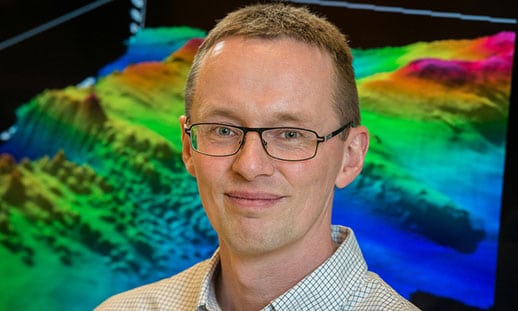Case Studies
Dalhouise University
Dr. Craig Brown, pioneer in testing the multifrequency mode for bottom characterization research
Research
Dr. Craig Brown collaborates with R2Sonic to revolutionize the collection and use of multifrequency backscatter data.
Dr. Brown's Research
Dr. Brown, an Associate Professor of Oceanography at Dalhousie University, has focused his research on the application of echosounding and using sonars to study, map, and monitor seafloor habitats and ecosystems. His focus on backscatter data arose from the realization that it was going largely unexplored and underutilized, despite being "critical for understanding geological and biological patterns on the seafloor", he explains

Multifrequency Surveys
Dr. Brown conducted a series of surveys in Bedford Basin, using different frequencies to gather additional information about the seafloor characteristics. He was eager to test the sonic multibeam product range for its multifrequency capability, which allowed for all the data to be gathered in one single pass. "These types of data sets are game changers in terms of how we can understand seabed ecosystems", he says.
The Importance of Backscatter Data
Dr. Brown believes that there is still a lot of work to be done to understand the backscatter signals and the data that can be extracted from it. The more information gathered across different frequencies, the more we will understand about habitat patterns on the seabed.
Collaborative Spirit
He advocates for linking research with industry engagement and improving available seafloor sensor technologies. He is interested in using sophisticated tools to classify multibeam data to understand biological and geological patterns.
Previous Work
Before joining Dalhousie University, Dr. Brown was an NSERC Industrial Research Chair in Integrated Ocean Mapping Technologies at the Nova Scotia Community College (NSCC), in Dartmouth, Nova Scotia.
